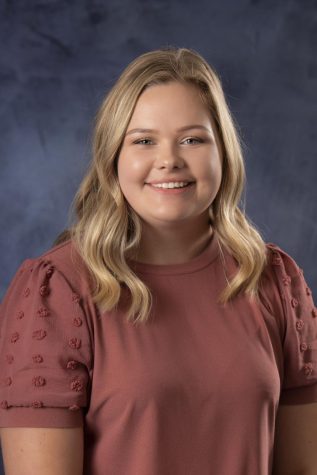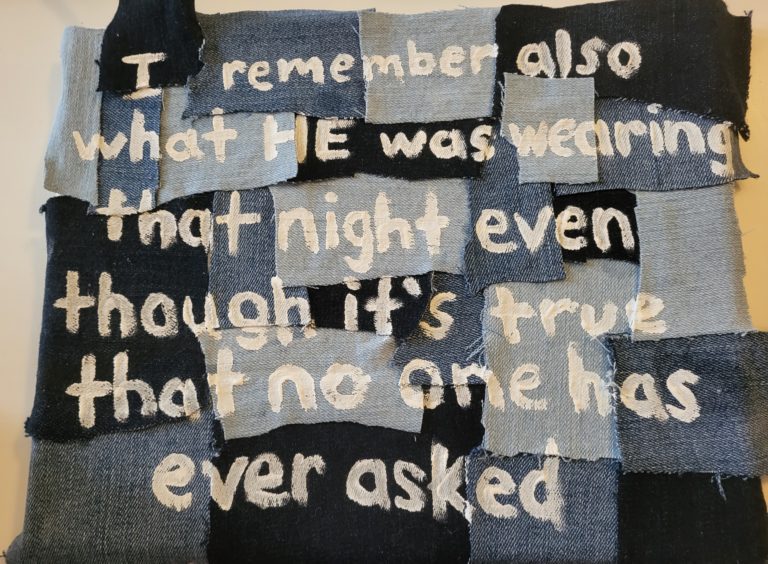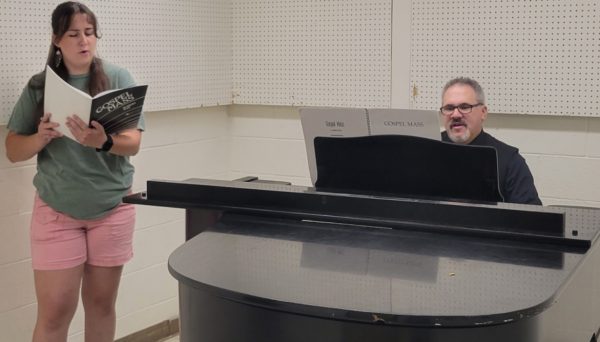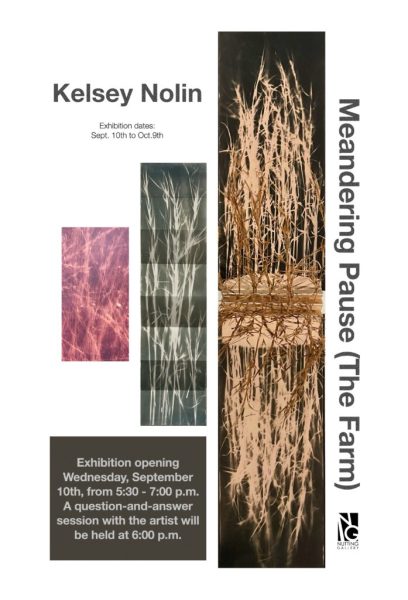Creative arts therapy student’s capstone project helps to celebrate sexual assault survivors
Artwork designed by Lindsay Manor that features a quote from a poem written by Dr. Simmerling on pieces of denim that make up a patchwork design.
For many, April signifies a time of light and rebirth with the Spring season approaching, but for one West Liberty University (WLU) Creative Arts Therapy (CAT) major, Lindsay Manor, this month represents sexual assault awareness and challenging the stigma surrounding societal victim blaming.
With April being considered Sexual Assault Awareness Month, the exhibition of Manor’s senior capstone project, “What They Were Wearing”, is a perfect way to celebrate survivors and allow victims of sexual assault to gain back control through mediums of clothing.
The inspiration behind this project spurred from Manor’s involvement as an intern at the Sexual Assault Help Center and volunteer work for the Young Women’s Christian Association (YWCA) in Wheeling, W.Va. During her time shared with these organizations, she noticed a trend in the questions received by victims of sexual assault that insinuated their clothing was the reason for the assault.
Through her research, Manor discovered the “What Were You Wearing Movement” that features the clothing of what people were wearing at the time of their attack. “This was eye opening because you can see there is no correlation in the clothing. Some were wearing sweatpants and a t-shirt, some were wearing a type of uniform and so on,” expressed Manor.
Manor’s passion of art and ending the stigma of victim blaming among sexual assault victims culminated to form the idea for her final project. “Giving the option for people to alter clothing for art gives them that control and power over something that has been used against them in the past,” said Manor.
Manor kicked off the beginning of her project on Wednesday, March 23, with an art workshop that allowed all attendees to speak up about their experiences with victim blaming by altering and painting pieces of clothing. Art supplies, fabric and pieces of clothing were provided to those in attendance but participants wishing to alter their own clothing had the opportunity to bring their own.
“The main goal was to provide students with an outlet for any experiences they have with sexual violence. It is something that stays with you and art can help someone process those feelings. Additionally, I wanted to spread awareness about the process of art therapy. I feel like it can be misunderstood, and this workshop was a great example of what art therapy is.” Manor went on to explain that despite someone’s involvement in matters of sexual violence, she feels that “every person has experienced the overall stigma where we are told what is appropriate for us to wear from a very young age.”
Manor expressed her happiness with the turn out of the event and her interest in the differences of the artwork produced. Manor noted one similarity of everyone’s pieces by stating “There was a lot of use of hands in artwork! This is very interesting because it is common for sexual violence survivors to exclude hands when they are drawing human figures. The lack of hands typically symbolizes the feeling of loss of control and power, so we wondered if a lot of people included hands in their artwork for this workshop as a sign of regaining that control.”
In preparation of crafting a safe environment during the workshop, Manor met with Ashley Carpenter, the executive director at the Sexual Assault Help Center, Terri Giller, a WLU professor of art therapy and Kate Billings, WLU’s Title IX Coordinator, to discuss the details of how to make those in attendance feel safe. In addition, an advocate from the Sexual Assault Help Center was present throughout the workshop to shed awareness about the services provided by the help center and to offer guidance if anyone needed to talk.
“I wanted to make sure everyone had a comfortable space for the art making process and that means having someone there to listen if they feel triggered by their feelings and experiences,” said Manor.
With the workshop well underway, the next step in Manor’s project is setting up her final art exhibition that will feature the clothing people created and altered at the workshop. The display of the submitted work will be present through the month of April where each piece will be represented anonymously with a short title and description.
The “What Were They Wearing?” art exhibition goes up on April 1, but students interested in submitting pieces of clothing or artwork can enter the exhibition until April 18. For any questions on how to submit or for more details about the project, contact Lindsay Manor at [email protected].

Brianna Hamon, editor-in-chief of The Trumpet, is a senior at West Liberty University with a major in public relations and a minor in journalism. In the...







